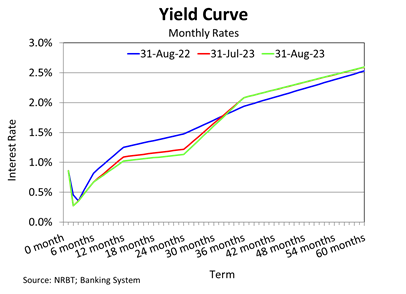Domestic inflation driving monthly headline inflation higher
- Details
- Category: Economic Releases
- Created: 15 August 2017
| Inflation May 2017 | ||||
| May 17 |
Apr 17 |
Mar 17 |
Feb 17 |
|
| Headline * | 10.0 | 9.5 | 9.4 | 8.9 |
| Domestic ^ | 3.5 | 2.6 | 2.2 | 3.1 |
| Imported ^ | 6.5 | 6.9 | 7.2 | 5.8 |
| * Year-ended growth | ||||
| ^ Percentage point contribution to year-ended growth | ||||
The annual headline inflation in May 2017 rose significantly by 10.0%. This is the highest level of annual headline inflation since the inflation rate picked up in July 2016. The same period in 2016 recorded an annual deflation of 1.0%. The rise in the annual headline inflation rate was due to the very low level of imported prices in May 2016, which recorded a negative 5.0%. The impact of the custom duties and excise taxes imposed on various goods in July 2016 continued to be reflected in the annual headline inflation. In comparison to the annual inflation of April 2017, the contribution of the imported component of the headline inflation to the annual headline inflation eased by 0.4 percentage points whilst the contribution of the domestic component rose by 0.9 percentage points.
Inflation rose by 0.2% over the month mainly driven by the rise in the prices of local kava-Tonga and imported meat.
The annual imported inflation rose by 11.8% driven by higher food and oil prices. The price of imported food was the largest contributor which rose by 15.5% contributing 4.1 percentage points to the overall headline inflation. All imported food categories rose, except for fruits and vegetables, and this was led by a 23.4% increase in prices of meat, fish & poultry reflecting a 34.7% and 29.7% rise in the price of mutton flap and chicken pieces respectively over the year. This was followed by an 11.7% rise in the prices of other food components for items such as sugar which rose by 26.1%. Dairy farm and vegetable products rose by 3.3% for goods such as cheese and butter. The prices of these imported food continued to reflect the excise taxes and custom duties imposed on various imported food in July 2016. Similarly, the price of Winfield blue tobacco rose by 32.5%. Additionally, the increase in world oil prices drove the price of fuel higher by 19.2%, petrol and diesel prices rose by 21.1% and 18.7% respectively. This was followed by a 7.9% increase in the price of fuel and power under the household operations group which comprised of kerosene and liquid petroleum gas. The price of house maintenance goods also increased by 1.4% particularly the price of items such as paint and bricks.
However, over the month imported prices rose by 0.2% largely due to a 1.6% increase in the prices of meat, fish and poultry, followed by a 1.6% rise in the prices of clothing supplies and services.
The domestic inflation rate rose by 7.8% over the year accounting for 3.5 percentage points of the annual headline inflation. The local inflation was driven by the seasonality of local food, rise in electricity price, and the continued short supply of kava-Tonga. The prices of local food rose by 7.1% contributing 1.5 percentage points to the overall headline inflation. This was due to the prolonged dry weather in 2017 for growing vegetables compared to the same period in 2016. Increases in oil prices drove the electricity price higher by 22.7% contributing 1.0 percentage point to the annual headline inflation. Moreover, the price of kava-Tonga increased over the year by 69.4%, followed a 5.4% increase in the price of domestic alcohol.
Monthly domestic inflation rose by 0.2% in May due mainly to an 8.9% rise in the price of kava-Tonga.
On the outlook, the Reserve Bank expects the upward inflationary pressure to remain in the near term as world oil and food prices slowly rise, coupled with the impact of the excise tax which was introduced in July 2016. However, this tax effect is expected to disappear in the coming months, when it was effective the same time last year. The continued shortage of supply in kava-Tonga compared to its high demand is likely to impact the domestic inflation for some time, therefore contribute to the annual headline inflation. The Reserve Bank anticipates the annual headline inflation rate to fall below the inflation reference rate of 5% per annum after August 2017. However, movements in commodity and oil prices, and other temporary factors such as taxes on goods may pose a risk to this forecast. Additionally, the vulnerability of Tonga to natural disasters also poses a risk to the local food prices and consequently the inflation outlook.
Enquiries
Economics Department
National Reserve Bank of Tonga
NUKU'ALOFA
Telephone: (676) 24057
Fax: (676) 24201
Email: This email address is being protected from spambots. You need JavaScript enabled to view it.
Resources
| Inflation - May 2017 Released on 15 August 2017 | |
| See more Inflation releases. |

